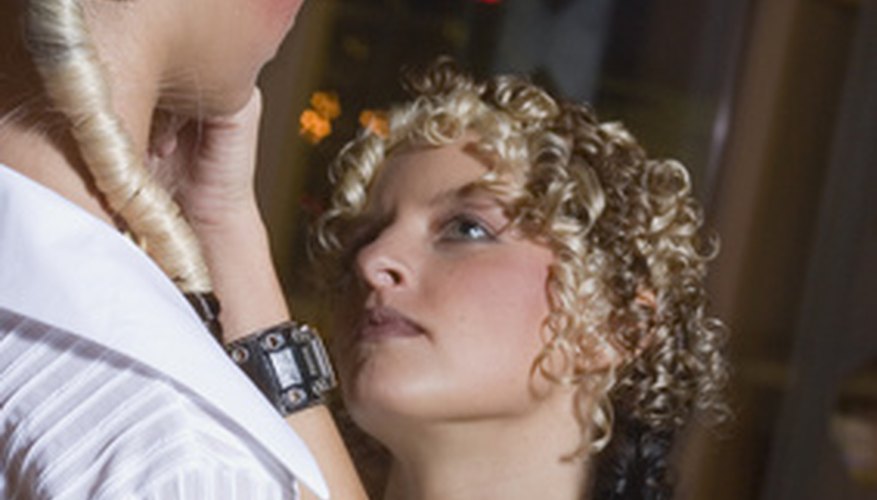Make-up, once used by primitive cultural groups for special ceremonies, is now a household item utilised by everyday people. Over many centuries, theatrical make-up evolved from tribal usage of natural dyes to the use of artist's pigments and household products and now appears in the form of portable compacts and tubes. The history of theatrical make-up includes some creative efforts, dangerous products and innovation.
Origins
Many tribes across the globe have used face paint both in time of war and celebration. In Egypt, kings and priests wore stylised make-up for official ceremonies and actors of classical Greek theatre wore masks that were painted to symbolise the characters they were portraying.
Evolution
Theatrical make-up evolved from painted masks to painted faces. The Greek actor Thespis painted his face with white lead, then shaded it with lees of wine so that he could stand out from the chorus. Later, stage lighting made make-up a necessity; the lights blurred the actors' features, so overexaggerating them with colour, shading and painted lines solved this problem.
Early Materials
Before 1850, materials (some of them hazardous) used for stage make-up included burnt cork to blacken the face; artist's pigments such as carmine, vermilion and red lead for lips and cheeks; lampblack for mascara; India ink to create wrinkles and folds; and white lead, flour and powdered pearls to whiten the face. Butter was used to remove the make-up.
Greasepaint
Invented in Germany, greasepaint, which consisted of powdered pigments mixed with lard, became the theatrical face paint of choice. Greasepaint was introduced to the US by Anglo-French actor Charles Fechter while on tour in the 1870s. In 1873, Ludwig Leichner commercially produced ready-made greasepaint sticks. Greasepaint became the standard for theatre make-up and, later, clown make-up.
- Invented in Germany, greasepaint, which consisted of powdered pigments mixed with lard, became the theatrical face paint of choice.
Max Factor
Max Factor fled Tsarist Russia in 1914 for Hollywood. There, he supplied actors with Leichner's greasepaint. After complaints from his clients (they didn't like the oily finish) and an unsuccessful attempt to convince Leichner to change the formula, he created his own liquid greasepaint. He then followed this invention with pancake make-up; the water-based matt finish was a hit. Today, most film make-up has a clean, dry, nongreasy finish. Theatrical make-up continues to utilise a lanolin base.
- Max Factor fled Tsarist Russia in 1914 for Hollywood.
- After complaints from his clients (they didn't like the oily finish) and an unsuccessful attempt to convince Leichner to change the formula, he created his own liquid greasepaint.
Application

Through trial and error, a system for applying theatrical make-up was born. Theatre make-up begins with applying a base to protect the skin, then the foundation of coloured greasepaint. Rouge is used to colour lips and cheeks, eye shadows and eyeliner define the eyes and powder is used for blending. Actors can rest assured knowing that their skin won't be damaged and that the audience members can fully see their expressions thanks to the drama of their make-up.
- Through trial and error, a system for applying theatrical make-up was born.
- Theatre make-up begins with applying a base to protect the skin, then the foundation of coloured greasepaint.
